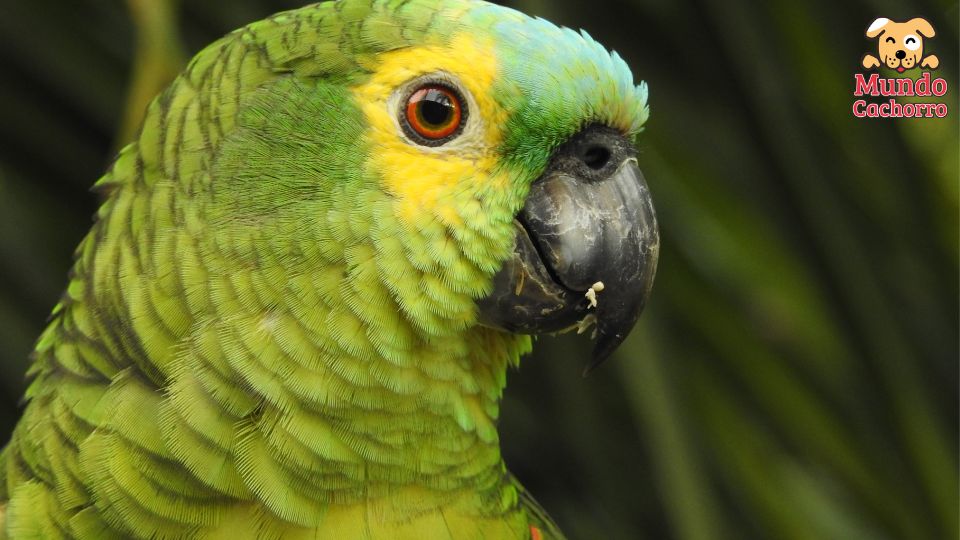Parrots are famous for their ability to imitate human sounds and words, making them fascinating and entertaining pets.
However, teaching a parrot to talk requires patience, consistency and the right techniques.
This process not only strengthens the bond between the parrot and its owner, but also provides mental stimulation for the bird.
In this article, we explain the essential steps and tips for teaching your parrot to talk, ensuring an educational and fun experience for both of you.
Indice
1. Understanding your parrot’s capabilities
Identify the species and its abilities
Not all parrots have the same ability to imitate words. Species such as African grey parrots, Amazons and cockatoos are known for their ability to speak, while others, such as macaws, may have less facility in learning words, although they can still imitate sounds. Understanding your parrot’s specific capabilities is the first step in setting realistic expectations and customizing training.
Recognizing the parrot’s individuality
Each parrot is unique, even within the same species.
Some parrots can learn to talk quickly, while others need more time and patience. Observing your parrot’s behavior and level of interaction with its environment will give you an idea of its readiness to learn to talk. Not all parrots will talk, and that’s okay; the important thing is that the bird is happy and stimulated.
Age and learning environment
Young parrots tend to be more receptive to learning, although adult parrots can also learn new words with the right amount of time. The environment also plays a crucial role: a quiet place, without excessive distractions, is ideal for training sessions. Make sure the parrot feels safe and comfortable in its space before training begins.
Effective techniques for teaching words
Repetition and consistency
Repetition is key when it comes to teaching a parrot to talk. Choose a word or short phrase, such as “hello” or the parrot’s name, and repeat it frequently throughout the day. Use a clear and enthusiastic tone to capture the parrot’s attention.
It is important that the word is repeated in appropriate contexts, e.g., say “hello” every time you enter the room.
Association of words with actions or objects
Parrots learn best when they associate words with actions or objects. For example, saying “water” when you change the parrot’s water or “food” when you feed it helps the parrot understand the meaning of the words. This technique not only facilitates learning, but also makes the process more interactive and meaningful for the parrot.
Positive reinforcement
Positive reinforcement is a powerful tool in parrot training. Each time the parrot tries to imitate a word, reward it with a treat, praise or a caress. This type of encouragement motivates the parrot to keep practicing and improving.
It is important that the rewards are immediate so that the parrot correctly associates the word with the reinforcement.
Use of automated recordings and replays
If time is a limiting factor, using recordings may be a useful alternative. Play a recording of the word or phrase you wish to teach the parrot several times a day. However, this should not replace direct interaction, which is essential to build a relationship and foster trust between the parrot and its owner.
3. Common considerations and challenges
Patience and respect for the parrot’s pace
The teaching process can take weeks or even months. It is essential to be patient and not force the parrot to talk if it does not show interest. Pressuring the parrot can cause stress and hinder learning.
Instead, enjoy the process and celebrate every little bit of progress.
Avoid unwanted words or phrases
Parrots can learn words quickly, even unwanted ones. Avoid using inappropriate words or phrases in front of the parrot, as it is possible that it will repeat them at the least expected moment. Also, if the parrot starts repeating an unwanted word or sound, try ignoring it rather than reinforcing it, and redirect its attention to the words you want to teach it.
Handling frustrations and behavioral problems
If the parrot seems frustrated or shows signs of boredom, such as feather pecking or excessive vocalizations, consider modifying the training approach. Incorporating more interactive games, a variety of toys and environmental enrichment can help keep the parrot stimulated and motivated. It is important to remember that not all parrots enjoy talking, and some may prefer other types of interaction.
Understand the limitations and enjoy the process
Not all parrots will become great conversationalists, and that’s okay. Each parrot has its own rhythm and preferences, and the priority should be its well-being and happiness. While teaching a parrot to talk can be an incredibly rewarding experience, the most important thing is to build a relationship based on respect, patience and love.
Teaching a parrot to talk is a process that requires time, dedication and an understanding of the bird’s individual needs. With the right techniques, patience and lots of positive reinforcement, you can help your parrot develop its ability to imitate words and sounds. Beyond the words, what is most valuable is the connection that is established between the parrot and its owner, a relationship that can enrich the lives of both.
This process not only stimulates the parrot mentally, but also strengthens the bond between the parrot and its human family. Enjoying the process and accepting challenges as part of learning is key to a successful and satisfying experience. Ultimately, the goal is to provide an enriching environment where the parrot can thrive and express its unique personality.








